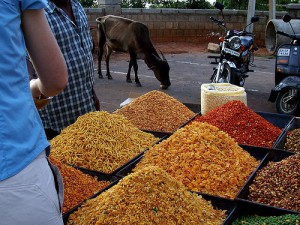Organophosphates Blamed for Death of Children
Organophosphates, the pesticides blamed for killing at least 25 children in India, are widely used around the world. This is not the first instance of organophosphate-related deaths. In 1986, for example, they caused a death toll of over 20 people, when bread was made from tainted flour. While we currently understand the dangers associated with organophosphate exposure, they were marketed as safe when they were initially developed in the 1940s. As Lucio Costa, a toxicologist at the University of Washington, put it, “They are very effective and pose minimal environmental problems.” Unfortunately, their widespread use has led to severe health problems. Organophosphates attack the nervous system and inhibit signaling between nerves and muscles, often leading to asphyxiation. Even chronic low-level exposure could decrease neurological capacity, especially in youth. For example, a 2010 study in California showed that prenatal exposure to organophosphates increased the risk of neurological disorders in children. Despite these adverse health effects, organophosphates are still in use, and low persistent levels are allowed on harvested crops in the United States.




